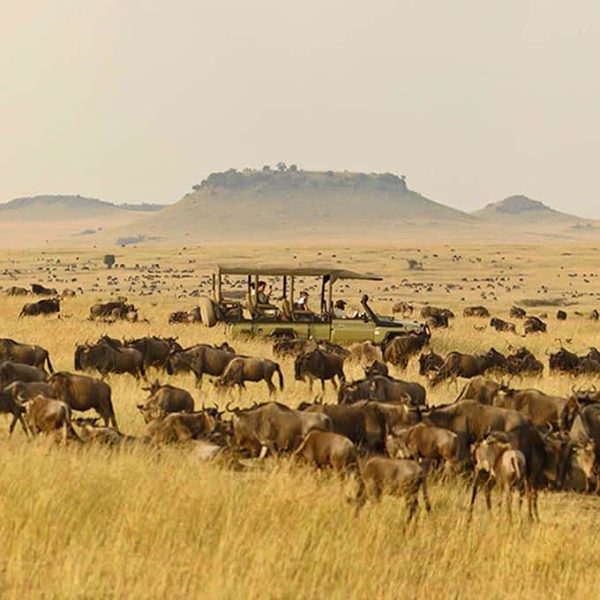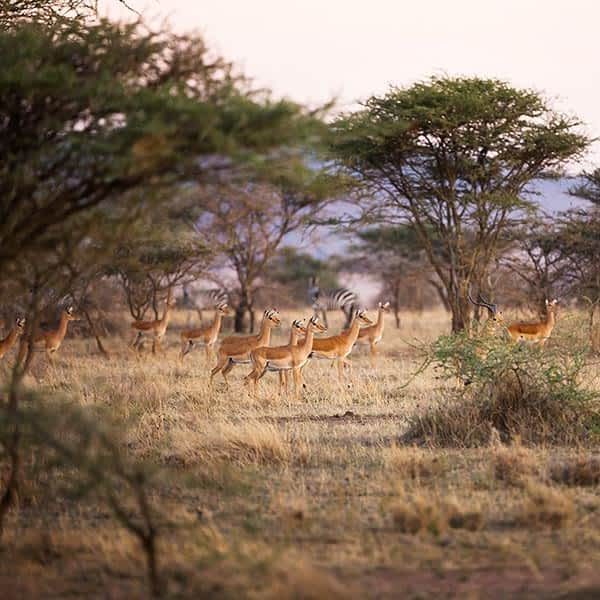Home / About
We don’t say this lightly: the Serengeti is always full of surprises, no matter the time of year.
The centerpiece of most travellers’ planning is, with good reason, to experience the Great Migration. However, we do invite you to look beyond ‘just’ the Great Migration and also discover other wonders of the Serengeti.




Serengeti National Park offers extraordinary wildlife viewing opportunities throughout the year – you just need to know when to go where to admire one of nature’s last remaining true spectacles: the Great Migration. For example, winter is the best time to see the herd in Southern Serengeti, while the Western Corridor and Northern Serengeti are the best places to spend the summer and autumn months. It’s worth bearing in mind that – also in this part of the world – nature will be its unpredictable self. Hence, chance plays a big part in witnessing the iconic river crossing when two million animals cross a river with rapids jostling their bodies and crocs snapping at their hooves. That being said, when choosing the right part of the Serengeti in the right period, large herds are usually easily spotted and there is a fair chance of seeing a spectacular migrational movement. Read more about the Great Migration.
Although most travellers can’t wait to catch a glimpse of the wildebeest’s spectacular trek, Serengeti National Park has much more to offer. Golden-maned lions sunbathing on a rock, an elusive leopard chilling out on a branch of an acacia tree and a cheetah chasing a gazelle at full speed on the never-ending sunburnt plains – to name just a few of the Serengeti’s magical beasts.
There are some powerful arguments in favour of avoiding the Great Migration. First, areas where the Great Migration can be seen, become busy with fellow travellers, something that can be bothersome in terms of your Serengeti safari experience. Second, most predatory species (but also most other wildlife species except zebra and wildebeest) are territorial and do not wander too far from their territories, so there is no need to follow the crowds. Moreover, most Serengeti safari camps and lodges offer substantially lower rates (often referred to as ‘green season’ rates) in April and May. Last, outside peak periods the Serengeti (but also the other national parks, including the Ngorongoro Crater Area) is far less crowded, whilst wildlife viewing options are still superb.
Most travellers pick the dry season (which takes place from late June to October) for a safari in the Serengeti National Park. Animals gather around rivers and waterholes to quench their thirst. The Great Migration is at its absolute prime and your chances of witnessing an iconic river crossing are at their best. Most lodges will remain open during the more tranquil ‘wet season’ when the rains turn the dry landscape into a lush, green oasis and the birthing season begins. Read more about Serengeti weather & climate on this page. Here are some pros and cons for the wet and dry season.
The wildebeest migration takes place across the Mara-Serengeti ecosystem and involves the movement of over 2 million wildebeests. The Serengeti is a year-round destination as it covers a vast area and offers unparalleled wildlife viewing.
Social media :
© 2023. All Rights Reserved. GSM – By Asili Explorer
We will contact you back within 24hrs via email. You can call us at +255 784 240 250.